Our next Spanish trip was a long weekend to Barcelona. We’d been told by so many people what an awesome city it is, and they weren’t wrong. Firstly, there’s the old stuff, like the surviving Romans columns from a 1st century Temple of Augustus – the largest Roman temple in Barcelona.
There’s also a 3rd and 4th century Roman walls and gateways around Barri Gotic and La Rambla.
The 13th century Barcelona Cathedral dedicated to a young virgin who suffered martyrdom during Roman times in the city. The Romans wanted her to worship at Augustus’ temple and she refused.
Here’s a 14th century synagogue in the old Jewish quarter (El Call) made up of 2 rooms below street level. Jews were persecuted during the 15th century and sealed off all ground level access to their homes. They stretched planks between their first floor windows to cross from one building to another.
Then there’s the 18th century church, San Felip de Neri. In this square, a bombed was dropped during the Spanish Civil War in 1938, killing 42 people (mostly children) who were seeking refuse in the church’s basement. The building still shows the shrapnel damage from the explosion. The Spanish Civil War was fought from 17 July 1936 to 1 April 1939 between the Republicans, who were loyal to the established Spanish Republic, and the Nationalists, a rebel group led by General Francisco Franco. The Nationalists prevailed, and Franco ruled Spain for the next 36 years, from 1939 until his death in 1975. That’s when Spain finally became democratic.
Once democracy was re-established in Spain, the Catalan Government was re-established in Generalitat of Catalonia in the Placa Sant Jaume. This is the administrative heart of both Barcelona and the surrounding Catalonia, and is where an annual festival is held of castell, or human towers. People will stand on each others shoulders and the towers will get 5 or 6 people high! Impressive!
As we wandered around the city, we also saw (only one) Invader street art. The artist makes little space invaders out of tiles and sticks them to walls, normally next to street signs.
But some of the most memorable stuff in Barcelona is the architecture done by Antoni Gaudi (1852 – 1926). We saw 2 of his apartment buildings while in Barcelona and they’re both bizarre and incredible.
Firstly, we saw was Casa Batllo in the center of town. It’s considered one of Gaudi’s masterpieces and from the outside, its easy to see why. Much of the façade is decorated with a mosaic made of broken ceramic tiles that starts in shades of golden orange moving into greenish blues. So colourful! The roof is arched and was likened to the back of a dragon or dinosaur. How bizarre! It was built between 1904 and 1910.
The other apartment building we saw was Casa Mila, also known as La Pedrera – a building with an undulating stone facade and wrought iron decoration of the balconies and windows. It was built between 1906 and 1910. It looks amazing.
Even the footpath outside La Pedrera is decorated and different!
We should’ve really gone inside these buildings (there’s an entrance fee), but didn’t really have time in our weekend. The Wimbledon was on (semi finals and finals) so we lost our evenings to tennis. Maybe next time we go back to the city, we’ll see if the interiors are as crazy as the exteriors.
But we did go inside one of Gaudi’s greatest works – the Sagrada Familia – a massive cathedral he designed that has yet to be finished a century later. But that’s the next blog post.
Until then…

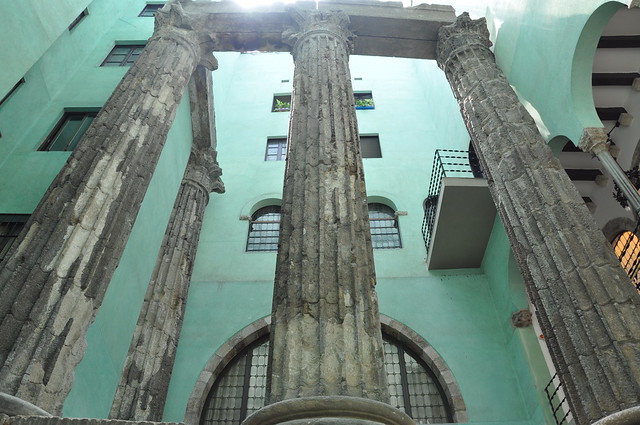
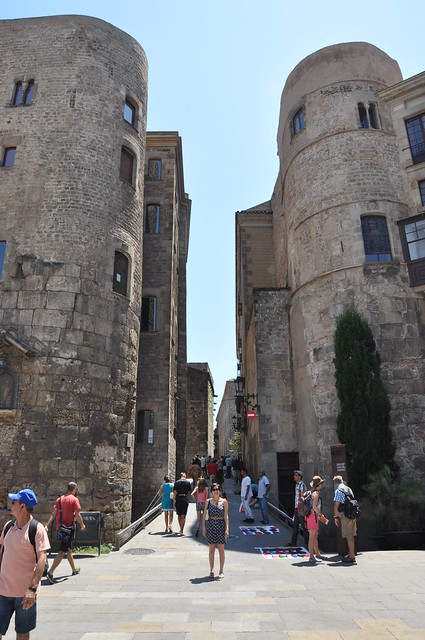
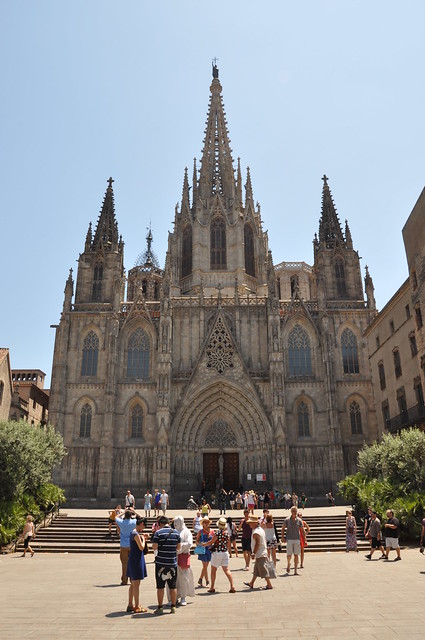
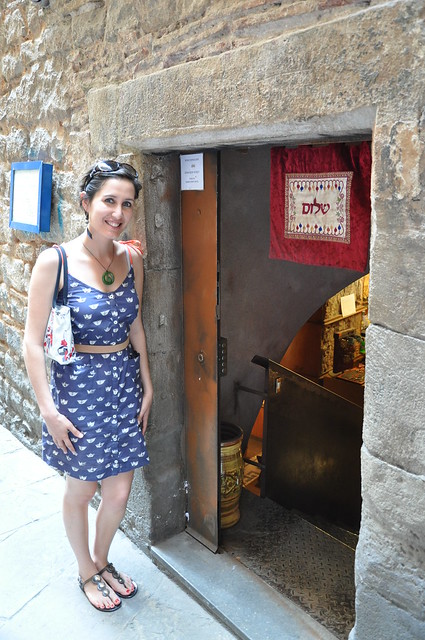
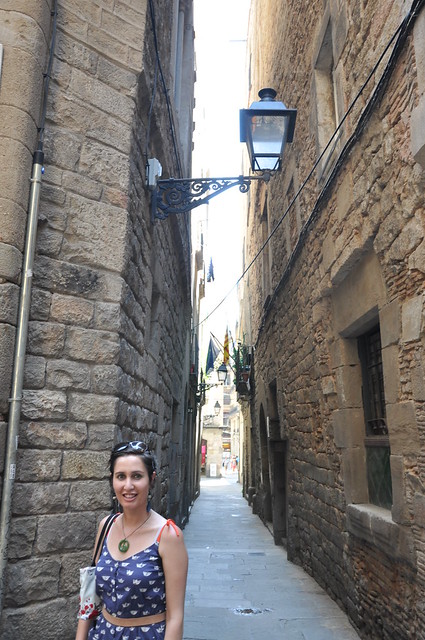
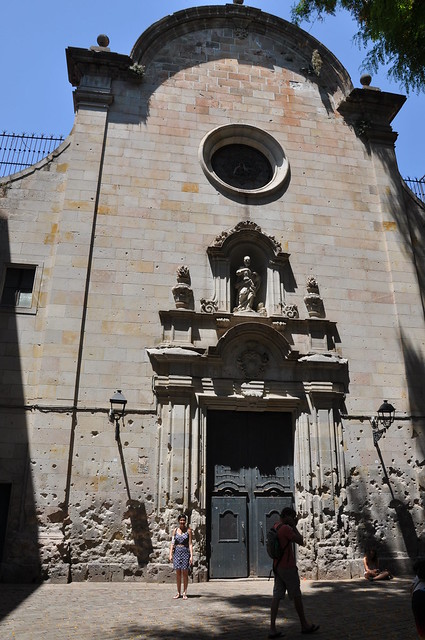
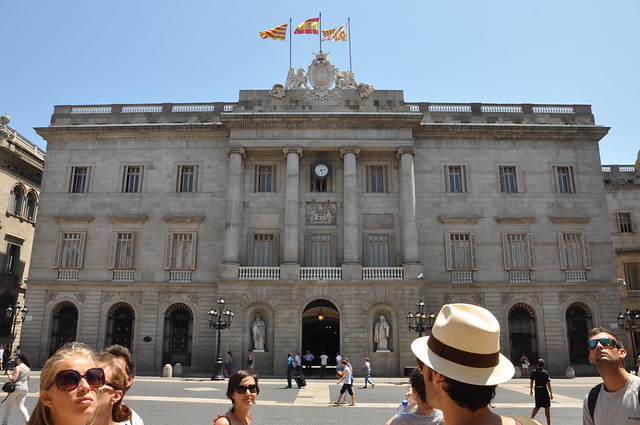
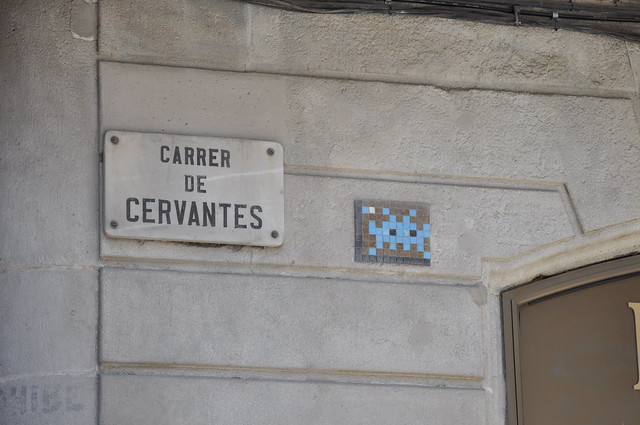
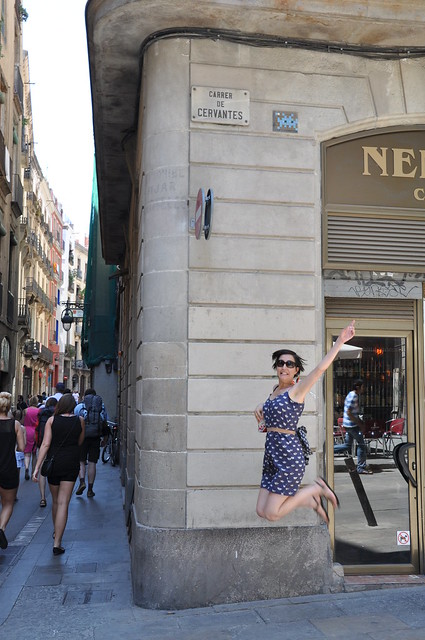
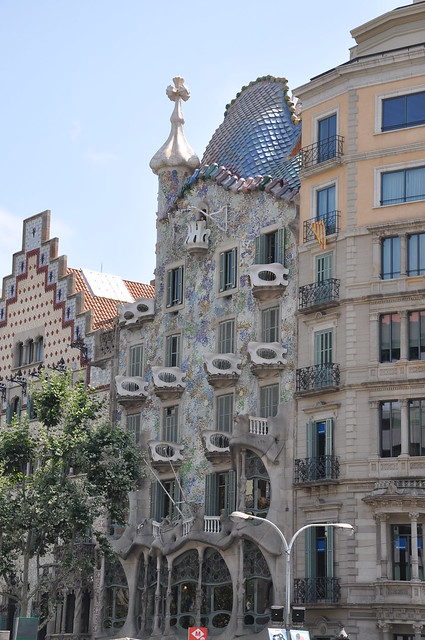
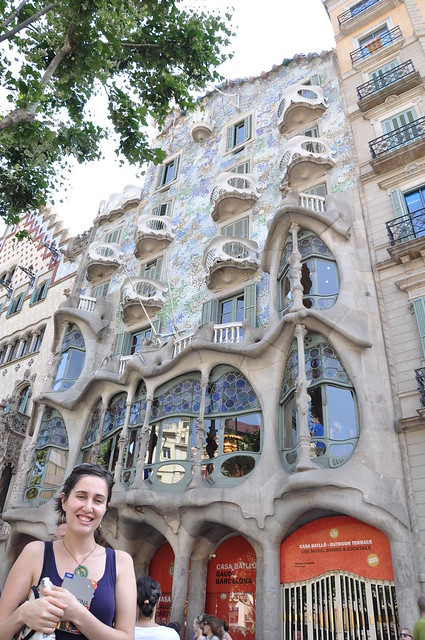
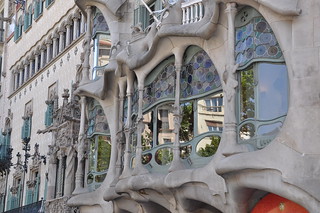


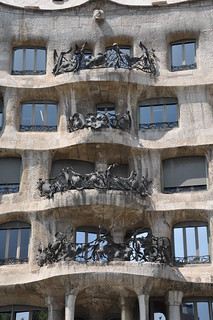
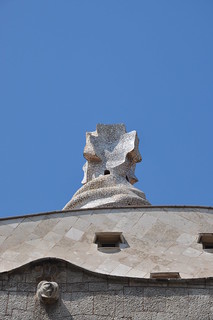
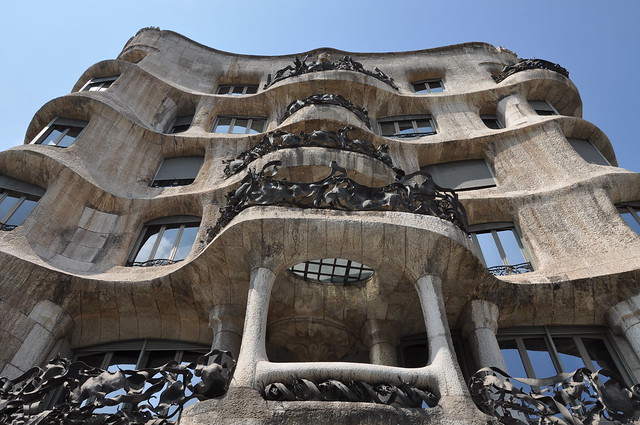
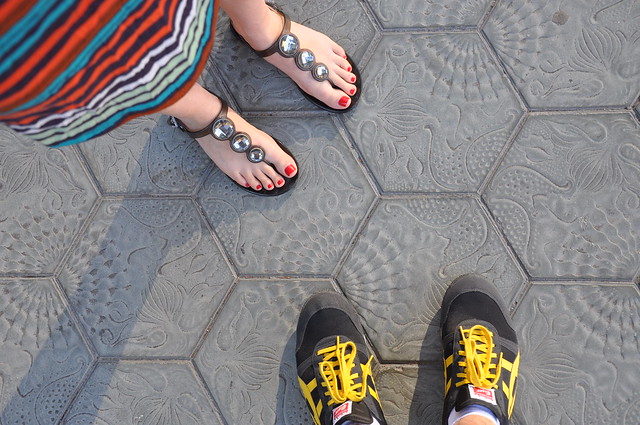
Foot shot AND a jumping shot AAAAAAND an invader piece! You guys are amazing x
All our foot shot photos should have a “Trademark Elly Awesomeness” 😀